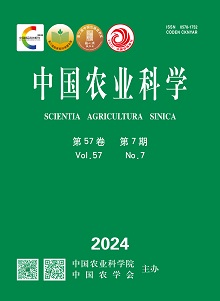【Objective】The objective of this study was to explore the effects of continuous reduction of chemical fertilizer on supply of soil nitrogen, phosphorus and potassium, and grain yield of spring wheat in Yellow River Irrigation Area of Ningxia (NYRIA), and to analyze the factors affecting yield stability, and then to provide a theoretical basis for rational fertilizer reduction and high yield and stable yield of spring wheat. 【Method】The field positioning experiment of chemical fertilizer reduction application was carried out for four consecutive years from 2019 to 2022, with Ningchun 4 of spring wheat cultivar as the test crop. The field treatments included conventional fertilization (CF with N 270 kg·hm-2, P2O5 150 kg·hm-2, K2O 75 kg·hm-2), the lower limit of reduced fertilization (RF1) with N180 kg·hm-2, P2O5 45 kg·hm-2, and K2O 30 kg·hm-2 (which reduced N, P2O5, and K2O by 33.3%, 70.0%, and 60.0%, respectively, compared with conventional fertilization), the upper limit of fertilization reduction (RF2) with N 225 kg·hm-2, P2O5 75 kg·hm-2, K2O 45 kg·hm-2 (which reduced N, P2O5, K2O by 17.0%, 50.0%, 40.0%, respectively, compared with traditional fertilization), and no fertilization (CK). The climatic factors during the growth period of spring wheat, soil moisture content before sowing and harvest of spring wheat, soil mineral nitrogen, available phosphorus and available potassium content, dry matter accumulation in shoot, grain yield and yield components of spring wheat at harvest were analyzed, and correlations among them were also discussed. 【Result】The soil moisture content before sowing were inter-annual differences in 2019-2022, among which the average was only 19.5% in 2022; the soil moisture content before sowing was significantly affected by fertilization treatment in 2020, there was no significant difference of soil moisture content before sowing between fertilization treatments in other years. The content of mineral nitrogen, available potassium and available phosphorus in the soil before sowing and harvesting were higher under conventional fertilization CF treatment, followed by RF2 treatment; there was no significant difference between them, while which of the RF1 treatment tended to decrease. In 2019, the CF treatment had the highest accumulation of dry matter in shoot and grain yield, which was 23 261.7 kg·hm-2 and 9 449.0 kg·hm-2, respectively, and had an increase of 2.8%-4.5% and 3.2%-16.0% compared with the RF2 treatment. However, from 2020 to 2022, the RF2 treatment had the highest accumulation of dry matter in shoot and grain yield, and there was no significant difference between the RF2 treatment and the CF treatment, but the yield of RF2 treatment performed the most stable at 4 years. From the perspective of inter-annual changes, the number of ears, 1000 grain weights and yields of hectares for all treatments showed a downward trend year by year, so the fertilization rate was not the main reason for the inter-annual difference in grain yield, but which was closely related to soil moisture before sowing, precipitation, temperature, humidity and wind speed. The decrease in yield in 2022 was accompanied by a lower soil moisture before sowing, hot dry air phenomenon during the filling period and a change in the nitrogen fertilizer base ratio. 【Conclusion】 In NYRIA, continuous and appropriate reduced application of chemical fertilizer with N 225 kg·hm-2, P2O5 75 kg·hm-2, K2O 45 kg·hm-2 would not significantly reduce the supply capacity of soil nitrogen, phosphorus and potassium, and increase the number of ears, ear grains and 1000 grain weights in the hectares of spring wheat, and promote the transfer and accumulation of dry matter in shoot to grains to a certain extent, then tend to increase the grain yield of spring wheat. However, there were interannual differences in spring wheat yield due to climate factors, such as rainfall, wind speed, and humidity, as well as soil moisture, continuous cropping obstacles, and nitrogen fertilizer application ratios. Among them, temperature, relative humidity, and wind speed were the main factors affecting interannual variation of wheat yield, and their impact on fertilization effects needed further research.











